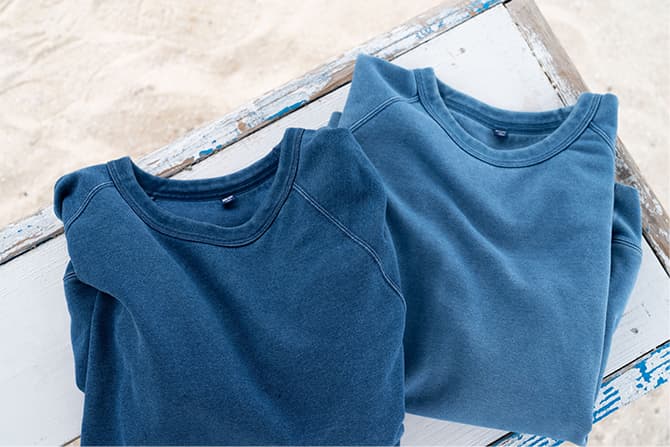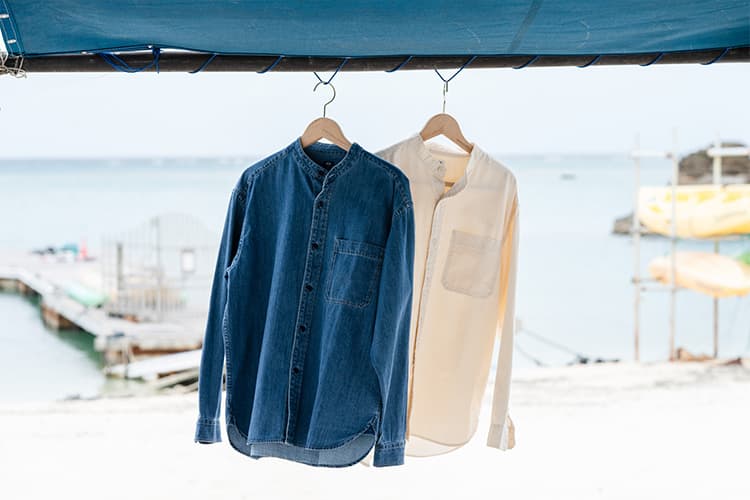OKINAWA
Discovering Blue
Photography by Kazufumi Shimoyashiki Text by UNIQLO
Blue—a colour with a mysterious allure. Ranging from navy to aquamarine, it contains endless gradations and depth. In Okinawa, a place where blue comes to life, we spoke with three fascinating artisans about making blue.

PROLOGUE
In 2022, UNIQLO launches a new line up called “UNIFORM BLUE.”
These items highlight the variety of colour tones made possible by indigo. Here in Okinawa, there are blue things everywhere.
From the crystalline sea and sky to the blue crafts that reflect them.
Let’s make a tour of three compelling blues created on the island.
Episode 01
Traditional Okinawan Indigo Dyeing
The town of Haebaru is about twenty minutes by car from central Naha. Known historically for producing a woven textile called kasuri, it’s also home to Takuya Oshiro, a dyer working in traditional Ryukyuan modes.
Oshiro is the grandson of the late Koshiro Oshiro, a master indigo dyer who employed techniques dating back to the Ryukyu Kingdom of the fourteenth century. Once we had finished with our introductions at the dyeworks, Oshiro surprised us by pouring awamori, an Okinawan alcohol, straight into the vat.

“Indigo dyeing involves oxidation and reduction reactions, but you need yeast to help it along. Awamori feeds the yeast. If you control the environment and keep the dye nice and happy, the colour will be great. Indigo is an expensive way to dye. Making the most of it takes a lot of effort.”
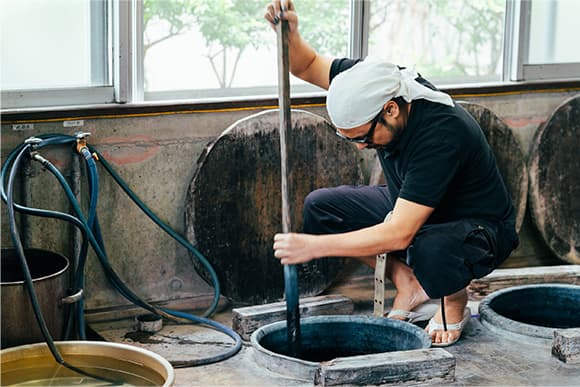
Working with indigo, the first step is to create a paste called doroai by soaking leaves of the Ryukyu-ai plant in water until their colour is released and mixing the resulting dye with calcium hydroxide. The liquid itself has a yellow colour, but once cloth or thread immersed therein has been exposed to oxygen through washing, the vivid blueness is revealed. In fact, a piece of cloth dunked in the vat starts turning blue the second it meets the air.
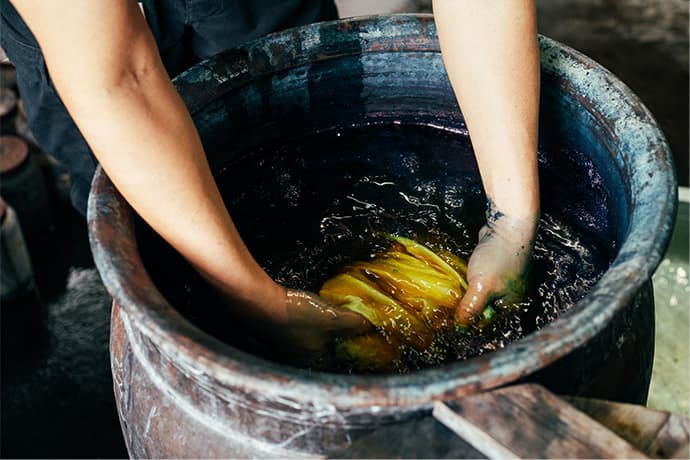
Soaking cloth in the vat, so that the colour penetrates. At this point, the fabric is still yellow.
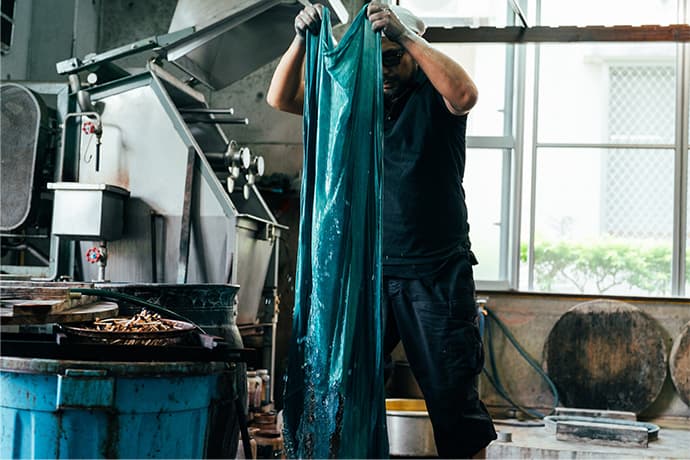
Fresh from the vat, the cloth is exposed to air and water, turning a refreshing shade of blue.
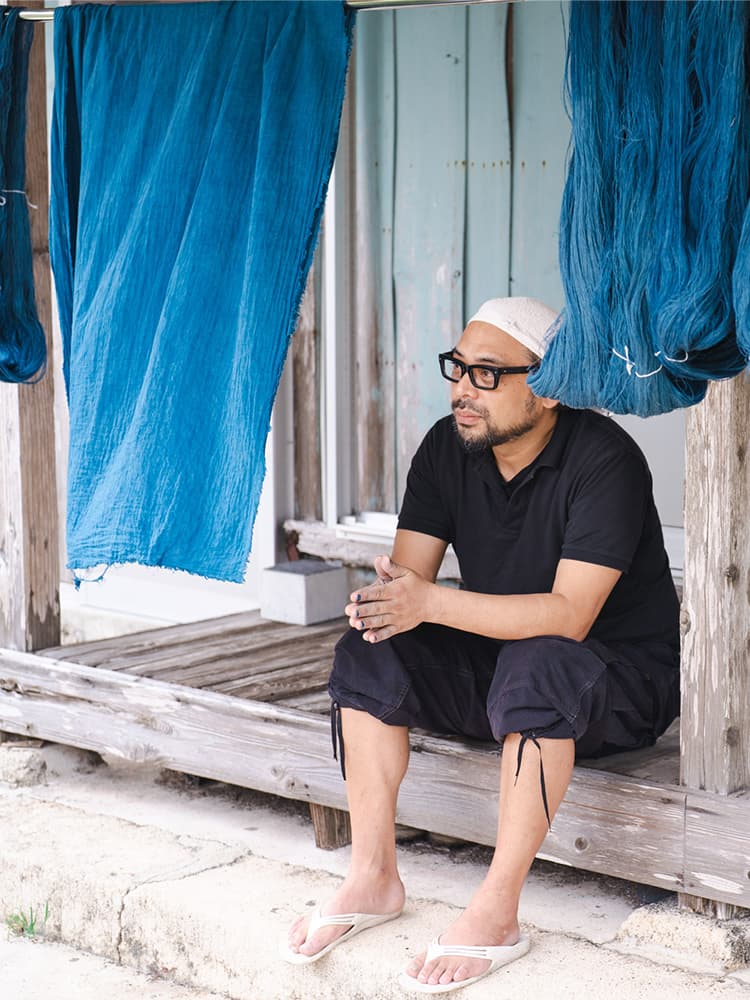
Once the dyeing process is complete, the cloth is dried in the warm island breezes, then sold wholesale to clothing manufacturers. Skeins of blue linen rustle from the rods of an outbuilding of the old Okinawan house Oshiro uses for his workshop.
“In the old days, just two kinds of fabric were traditionally used for kimonos in Okinawa: asaji, which has a subtle, lighter colour, and kunji, which has a strong, richer colour. Pale or dark. Only two options. People of status wore kunji, and everyone else wore asaji kimonos. So historically, nobody wore this intermediary colour we associate with indigo today.”
The history of indigo in Japan took different trajectories in Honshu, the main island of Japan, and in Okinawa. In Honshu, the many tones between light and dark were given dozens of specific names, from paler kamenozoki and asagi-iro to the deeper kon and nasu-kon, but here in Okinawa, there were only two. What a revelation that these gorgeous blue tones actually look modern, viewed in the historical context of Ryukyuan indigo.
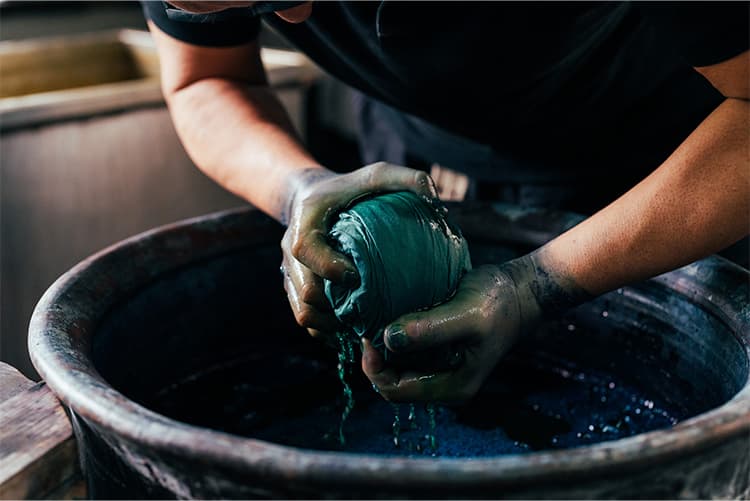
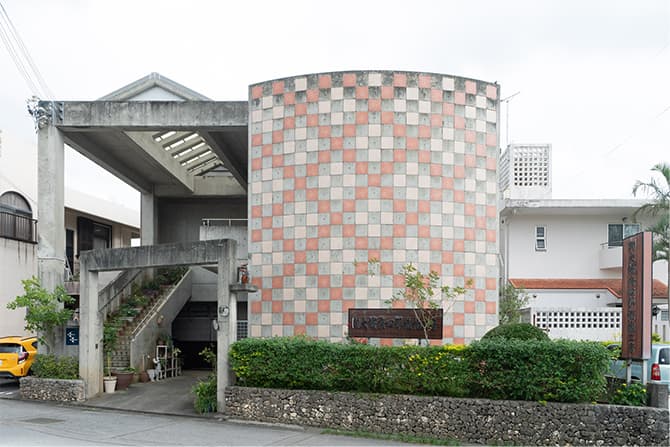
Koshiro Oshiro Textile Studio
▼175 Motobu, Haebaru, Shimajiri District, Okinawa
*Fabric wholesale only. Not available for purchase.
“My grandfather, who loved kunji, was known in the world of traditional arts for saying, ‘Rich colours are part of the Okinawan heritage.’ But speaking privately, he encouraged my growth. “Try anything you want,” he said. “Keep things interesting.” That’s why I’ve done my best to preserve the old ways, while incorporating features that are anything but traditional, even playing with traditions. This hasn’t always pleased my dad.”
While learning the techniques from his grandfather, a modern master, Oshiro was encouraged to think freely. That’s how he arrived at his specific shade of blue.
“Blue conjures a relaxing image of the sky or ocean in the summertime, which connects it to this place and makes a strong impression. I actually don’t use a precise colour scale. It’s fun to estimate and see how it comes out.”

Koshiro Oshiro Textile Studio
▼175 Motobu, Haebaru, Shimajiri District, Okinawa
*Fabric wholesale only. Not available for purchase.
Episode 02
Toward an Oceanic Shade of Blue
“I want to evoke the natural world, with a single glance.” Thus ceramicist Koji Iki of Toukibou Ichi describes his work. True to his word, his Persian blue ceramics are amalgams of light and dark, rich with the contrasting colours of the sea.
“What’s key to this place is the brightness, the intensity of sunlight. In bright places like this, primary colours enter our eyes much more readily. From that perspective, I thought it would be great to glaze bone-white clay with cobalt—perhaps an intense shade of blue for Japan, but just right for this island. I’ve been doing this since opening the studio in 1996.”

In the Okinawan language, the word for pottery is yachimun. Brought to popular attention in the 1920's with the Folk Craft Movement led by Soetsu Yanagi and Shoji Hamada, yachimun has become a household name, as one of the representative crafts of Okinawa. But what impelled Iki to devote himself to making yachimun was Okinawan pottery from an even earlier time.
“People have been making pottery on Okinawa since the fifteenth century, the days of the Ryukyu Kingdom. Whereas ceramics in Honshu were influenced by Northern China and the Korean Peninsula, Okinawa was overwhelmingly influenced by Southern China, Vietnam, Thailand and Southeast Asia as a whole. We’re part of Japan, but the fact that our ceramics came from other cultures sets us apart. This influence is clear in the karakusa curlicue designs, which are very close to patterns used in Vietnam.”
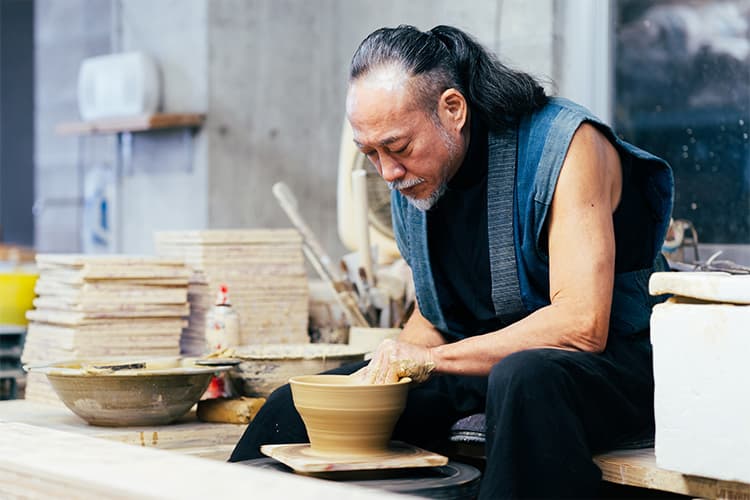
Originally from Kyoto, Iki entered the Okinawa Prefectural University of Arts in 1986, part of the first graduating class. His first year, however, turned out to be a disappointment.
“I wanted to escape from my hometown. A new art school was opening in Okinawa, so I came down and majored in crafts. My thinking was that design or painting was something that you studied in the city, whereas if you wanted to do crafts, you should head into the country. But when I actually got here, it was way different than expected. I felt a kinship with the old tombs and castles, but I had no idea where to begin engaging with the yachimun around me.”
The turning point came in his second year. As part of a course that he was taking with Jissei Omine, master potter and assistant professor, Oshiro had a chance encounter with a piece of treasure that the cultural museum in Shuri showed his class.
“It was a chilling snow-white makai*, made in the Ryukyu Kingdom period, early nineteenth century. When I saw it, I knew that I was in the right place. The thing that really got me was the karakusa patterns painted over the white glaze. This was no Japanese tea bowl. It felt like it held the breath of Asia. My graduation project was an attempt to reproduce this same white glaze.”
*In Okinawan dialect, a word for bowl.
Rooting his work in a sense of place, Iki began using Persian blue, influenced by his teacher.
“This glaze was not traditionally used in Okinawa. My class got to attend a seminar with Takuo Kato, the ceramicist and Living National Treasure. He was also known as a leading authority on Middle Eastern porcelain from the middle ages and a researcher on the glazes used in old Persian ceramics. That must have been where my teacher got the idea, since as I recall, Omine was the first person to make Persian blue ceramics in Okinawa.”
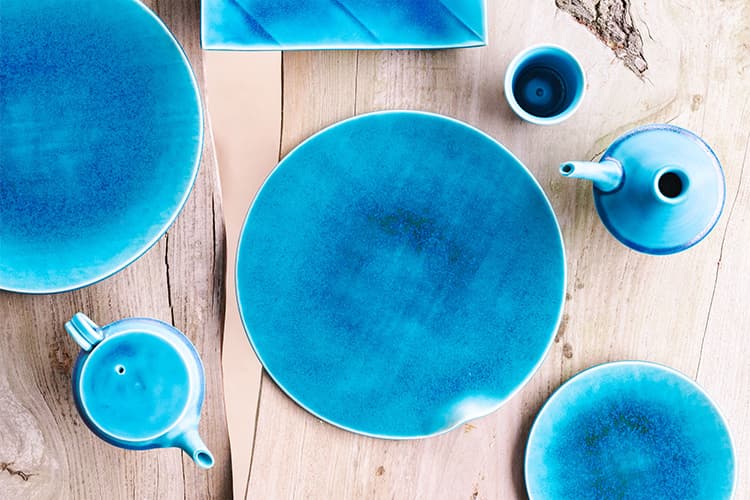
Persian blue series. The contrasting colours are beautiful. A small plate starts at 2,750 yen.
A spirited work using a thick cobalt glaze. Not for sale.
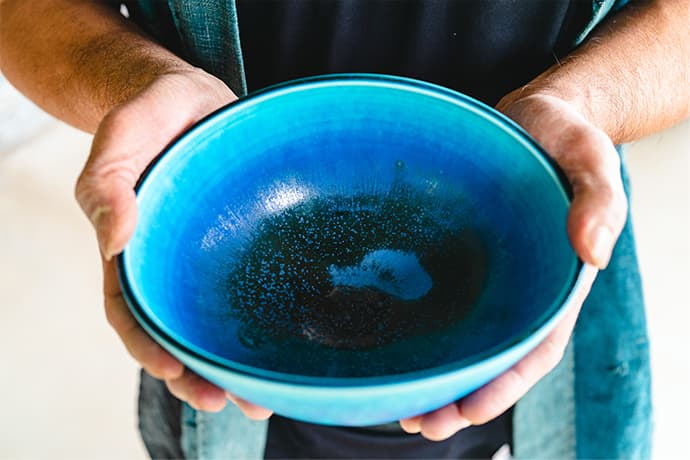
A spirited work using a thick cobalt glaze. Not for sale.
Iki smiles, saying that today, lots of other potters taking cues from him and Omine have been working with Persian blue.
“Every potter on the island is bound to want to try this colour sooner or later! It’s only natural. But for the glaze to come alive, it has to have a depth that calls to mind the sea and sky. That’s what I’m reaching for with my work. If you’re gonna use a glaze like this, you need to highlight its most striking features, so that it transcends pottery and evokes the natural world. The denser the microcosm contained by the work, the more thrilling the result. The history of Okinawan ceramics goes back six hundred years. What makes it fun for me is packing that whole history into a single work, so that people want to know about its background. We have a unique tradition, with all these interesting links to other cultures. I hope this carries on, as a legacy of diversity.”
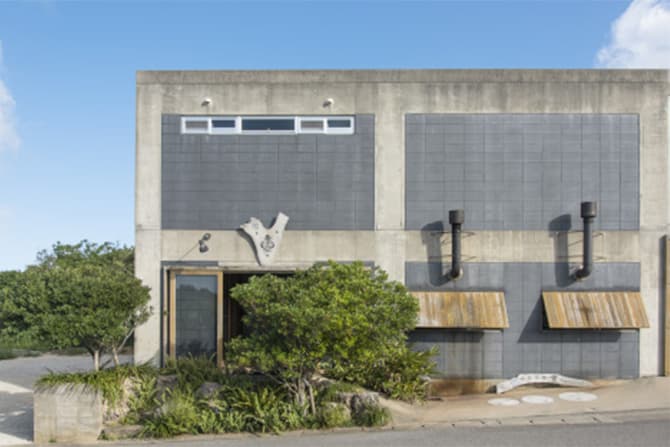
Toukibou Ichi
925-2 Nagahama, Yomitan, Nakagami District, Okinawa Prefecture
https://toukikoubou1.com/
OPEN 9:00-18:00 Closed Some Sundays
Above the first-floor studio is a second-floor gallery, featuring Iki’s Persian blue series and other works.

Above the first-floor studio is a second-floor gallery, featuring Iki’s Persian blue series and other works.
Episode 03
Sustainable Ramune Blue
Perhaps you’ve heard of the “Pelican Pitcher,” a masterpiece of Ryukyu glass. Its beak-shaped spout and birdlike figure have elements in common with Nordic glass.
Hoping to learn more about this cool blue medium, the same hue as a bottle of ramune, we spoke with Yukiharu Uesato, head of Okuhara Glass, the oldest glass studio in Okinawa, just as he was tacking on a molten red handle.

Pelican Pitcher and glass. The pale ramune blue is pristine.
“This colour is actually just the colour of the glass scraps we recycle from construction sites. Our shop has been using recycled glass forever, since we opened in 1952. In the chaos of post-war Japan, resources were scarce, including scrap material, but we found our way by making work from melted-down juice bottles. Seeing this, the American soldiers took an interest. From there, we tried our hand at empty sake bottles, and since I signed on, twenty-five years ago, we’ve been using scrap glass from buildings. What hasn’t changed is that we stick with the colour of the base material, the way it is.”
To illustrate, he showed us a pair of cruets, one from today and one from twenty-five years ago, made from sake bottles. The difference is clear.
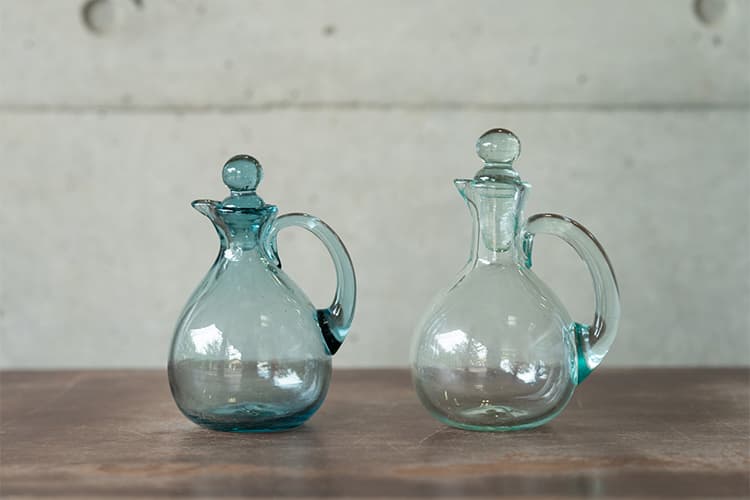
Glassware from twenty-five years ago (right) and today (left).
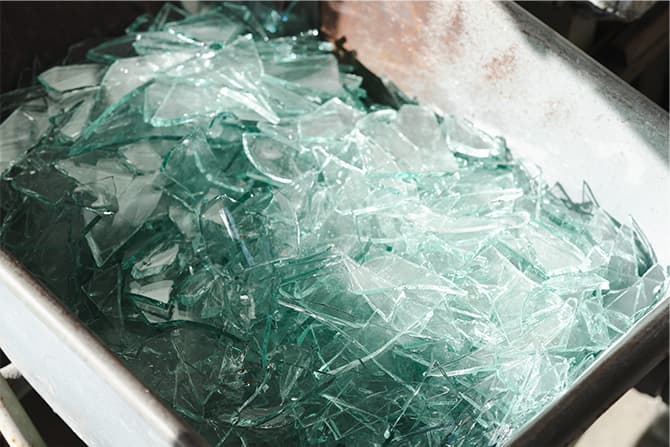
A fresh batch of construction scrap. This colour is the source of ramune blue.
“Back in the day, it was simply a matter of there being no materials. We had no choice but to use scrap, and we didn’t think of it as recycling. In retrospect, I’m really glad we did. This is a gentle, cooling colour. It’s absolutely fabulous. Compared to conventional raw glass, scrap takes more time and energy, since we have to wash it all and sort it into batches, but in our minds, Ryukyu glass is all about the recycled materials. It evidently cools down faster, too, but if you work with this in mind, it makes the job go swiftly.”
Uesato sets to work making a Pelican Pitcher. Dipping the blow rod in the crucible, he twirls on a helping of glass and blows. Thanks to his adroit craftsmanship, it has a spout and handle in the space of ten minutes.
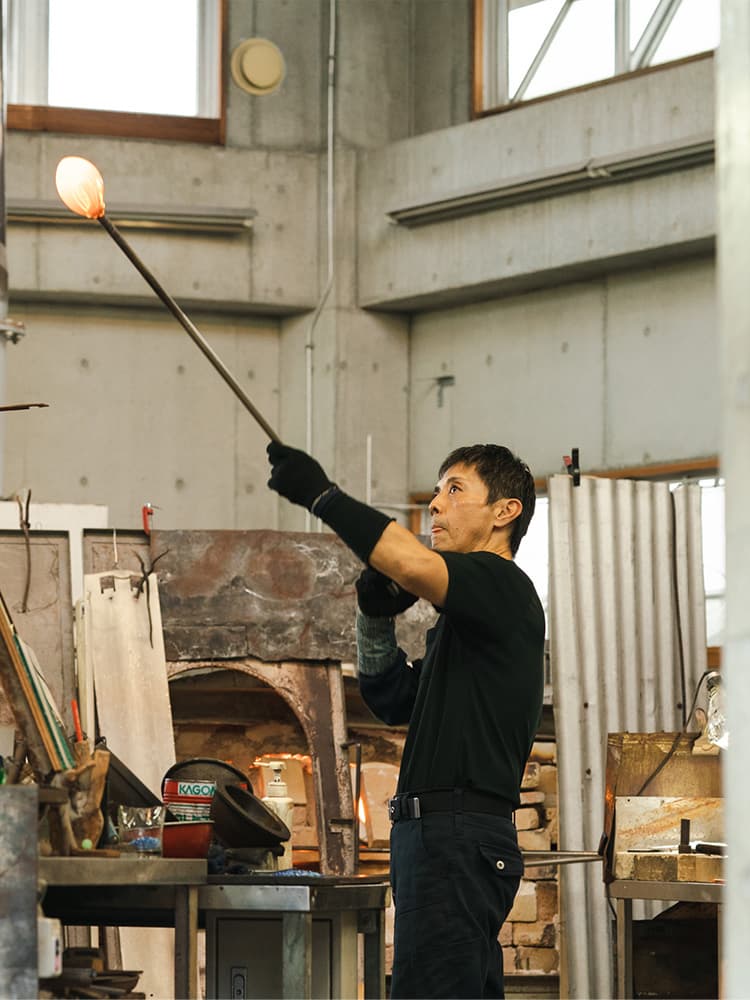
Uesato, holding aloft a molten bulb. Using his breath and gravity, he changes the shape of the glass in the blink of an eye.
“This colour is actually just the colour of the glass scraps we recycle from construction sites. Our shop has been using recycled glass forever, since we opened in 1952. In the chaos of post-war Japan, resources were scarce, including scrap material, but we found our way by making work from melted-down juice bottles. Seeing this, the American soldiers took an interest. From there, we tried our hand at empty sake bottles, and since I signed on, twenty-five years ago, we’ve been using scrap glass from buildings. What hasn’t changed is that we stick with the colour of the base material, the way it is.”
To illustrate, he showed us a pair of cruets, one from today and one from twenty-five years ago, made from sake bottles. The difference is clear.

Glassware from twenty-five years ago (right) and today (left).

A fresh batch of construction scrap. This colour is the source of ramune blue.
“This pitcher was originally based on a similar item from an Italian glassworks. There used to be a person on Honshu who made them too, but not anymore. A while later, a client approached my teacher Masao Tobaru and asked for him to make one, and we’ve been making them ever since. It’s an incredibly difficult piece to make. Ten years passed before my teacher let me take the lead. If you’re behind on any of the steps, it falls apart.”
Letting the materials show their true colours gives this work a certain beauty, lasting from one era to the next. We can only hope that this tradition—not just the use of materials but the techniques used to make them shine—will survive well into the future.
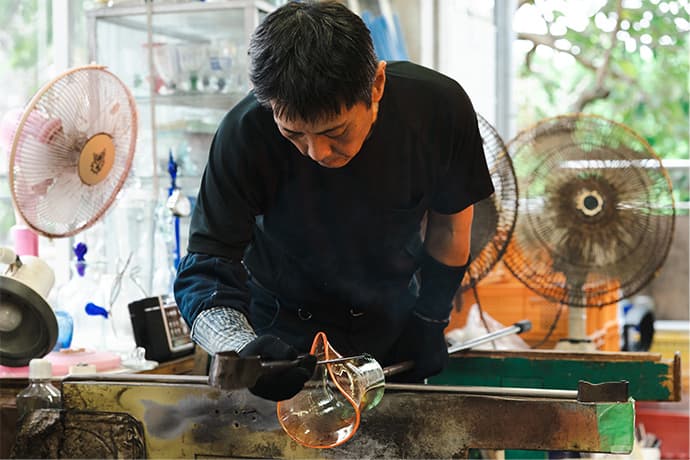
In a moment of truth, the extruded lip of glass is skilfully worked into shape, breathing life into the spout.
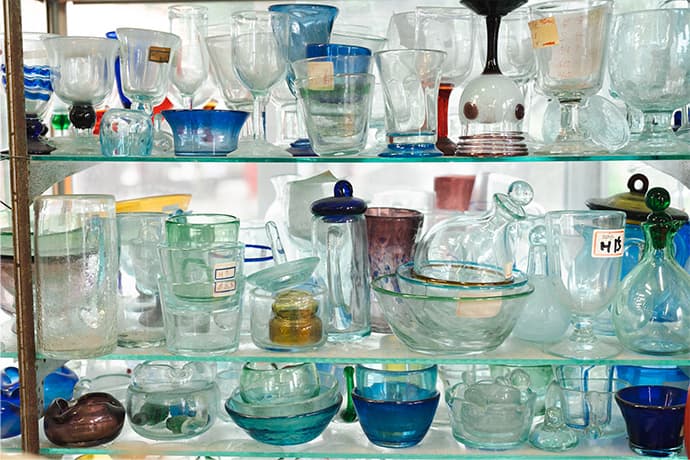
Samples of past work, in a variety of shapes besides the Pelican.
Letting the materials show their true colours gives this work a certain beauty, lasting from one era to the next. We can only hope that this tradition—not just the use of materials but the techniques used to make them shine—will survive well into the future.
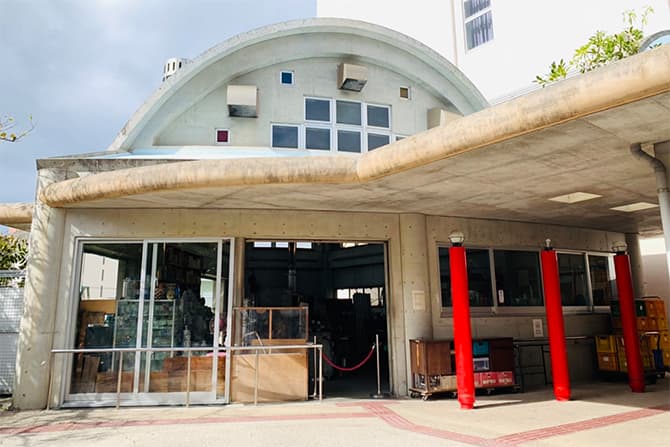
Okuhara Glass
Tenbusu Naha 2F, 3-chome-2-20 Makishi Naha, Okinawa
https://okuhara-glass.shop/
OPEN 10:00-17:00
Open Daily (classes on Wednesdays)
Workshops where you can make a glass or bud vase start at 2,700 yen.
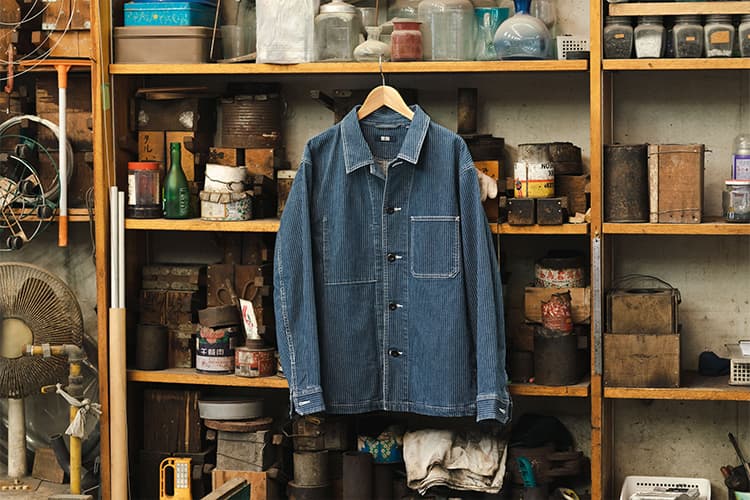
UNIFORM BLUE jacket. The workwear styling fits right in at the studios of Okuhara Glass.
Founded in 2013, Be. Okinawa is a local tourism studio.
Founded in 2013, Be. Okinawa is a local tourism studio. “Be” is about being present, prompting you to partake in an experience. This island is a place of beautiful nature and warm-hearted people, where you can be your true self. A place where travellers, whoever they might be, can soak up the fresh air, mingle with the locals, and connect from the heart.
https://beokinawa.jp/
- Français
- English




